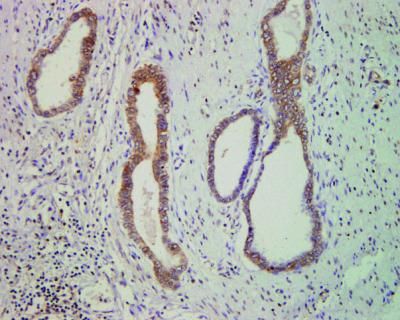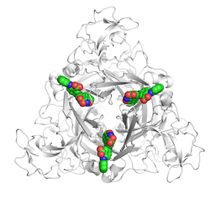Success in Enzyme Research: New Class of Active Ingredients Developed
"In contrast, previous substances often had a non-specific effect and caused unwanted side effects"
Advertisement
Inside cells, two important enzymes act like small central regulatory hubs: dipeptidyl peptidase 8 and 9 – DPP8/9 for short. Among other things, they regulate inflammatory reactions and influence whether a cell survives or dies. These mechanisms are especially important in cancer cells. With the help of drugs that inhibit DPP8/9, tumors can be targeted. However, until now there has been a lack of active compounds that specifically switch off/selectively inhibit only these two enzymes without disrupting other important proteins and processes in the body.
Researchers at the Center of Medical Biotechnology (ZMB) at the University of Duisburg-Essen have now made a breakthrough: they have developed a novel class of inhibitors that show a high selectivity toward DPP8/9. They have just published their results in the journal Nature Communications.
For their study, the researchers took a close look at the natural inhibitor Sulphostin. Sulphostin is known to inhibit another enzyme (DPP4). The scientists made targeted modifications at the structural level to a specific site of Sulphostin, known as the “warhead”. From this, they developed so-called N-phosphonopiperidones – molecules that exhibit a lock-and-key fit to the DPP8/9 active site. “These new compounds inhibit DPP8/9 with a high efficacy and at the same time barely interfere with other cellular processes. In contrast, previous substances often had a non-specific effect and caused unwanted side effects,” explains Prof. Dr. Markus Kaiser from the ZMB. His team has played a major role in the development. Partners were the research group of Prof. Dr. Doris Hellerschmied (also ZMB), the University Hospital Freiburg and a biotech company.
“Our study shows that it is possible to specifically and selectively inhibit DPP8/9 by precisely fine-tuning the structure of natural substances – an important step on the road to new therapies with few side effects,” says Kaiser. The newly developed molecules could not only be important for cancer therapy, but also for treating inflammatory or autoimmune diseases.
Original publication
Leonard Sewald, Werner W. A. Tabak, Lorenz Fehr, Samuel Zolg, Maja Najdzion, Carlo J. A. Verhoef, David Podlesainski, Ruth Geiss-Friedlander, Alfred Lammens, Farnusch Kaschani, Doris Hellerschmied, Robert Huber, Markus Kaiser; "Sulphostin-inspired N-phosphonopiperidones as selective covalent DPP8 and DPP9 inhibitors"; Nature Communications, Volume 16, 2025-4-3

















































